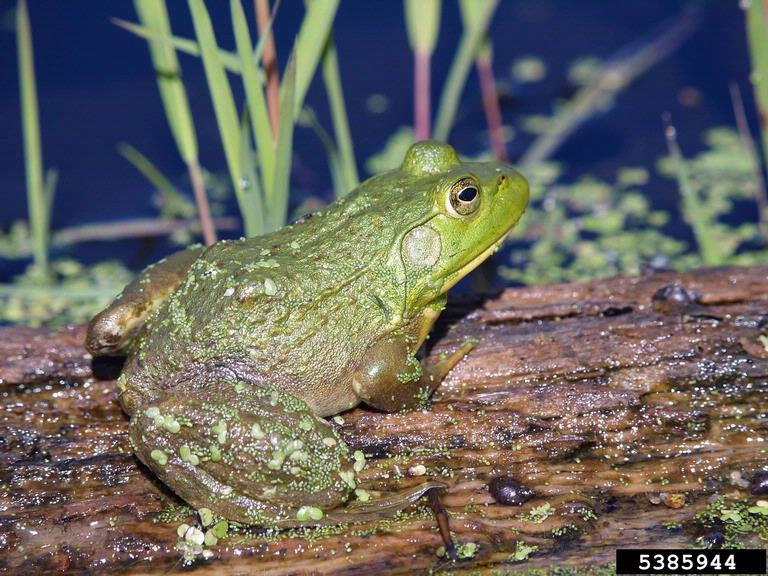Unwanted classroom pets are introduced to new habitats by teachers, classes and individual students allowed to take organisms home. These introductions can be accidental, but they often are intentional. Most classroom organisms are bought from large biological supply houses and other online retailers. Although there are federal and state laws that prohibit the sale of known invasive species, the interstate nature of the trade makes it difficult to enforce these regulations. Additionally, school districts often use national curricula that may involve aquatic species invasive to some parts of the country.
Case in point: Bullfrogs

Their popularity with children and their interesting life cycle make bullfrogs (Lithobates catesbeianus) a common classroom pet. They may have first been introduced to the Western U.S. through aquaculture, but they continue to be spread as classroom pets. Bullfrogs can produce up to 10 times as many eggs as other frogs and are less appetizing to predators, allowing them to outcompete native frogs and disrupt local food chains.
Case in point: Red ear slider

The red ear slider’s (Trachemys scripta elegans) native region spans from the Mississippi River and Gulf Coast basins to as far east as Virginia. Because they require little care, red ear sliders are one of the most popular pet turtles in the world. Over the years, they have spread to Australia, Europe, South Africa, the Caribbean and Southeast Asia. Their large body size gives them an advantage over native species, allowing them to outcompete native turtles for food and nesting grounds.